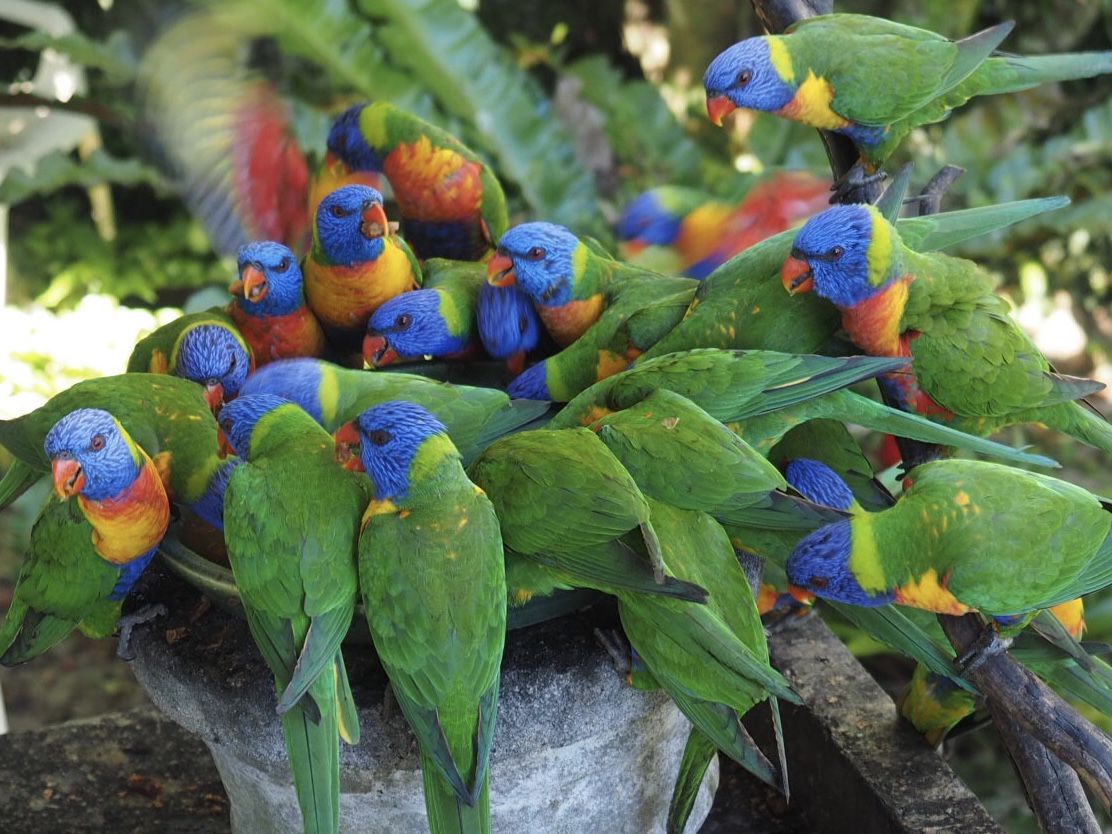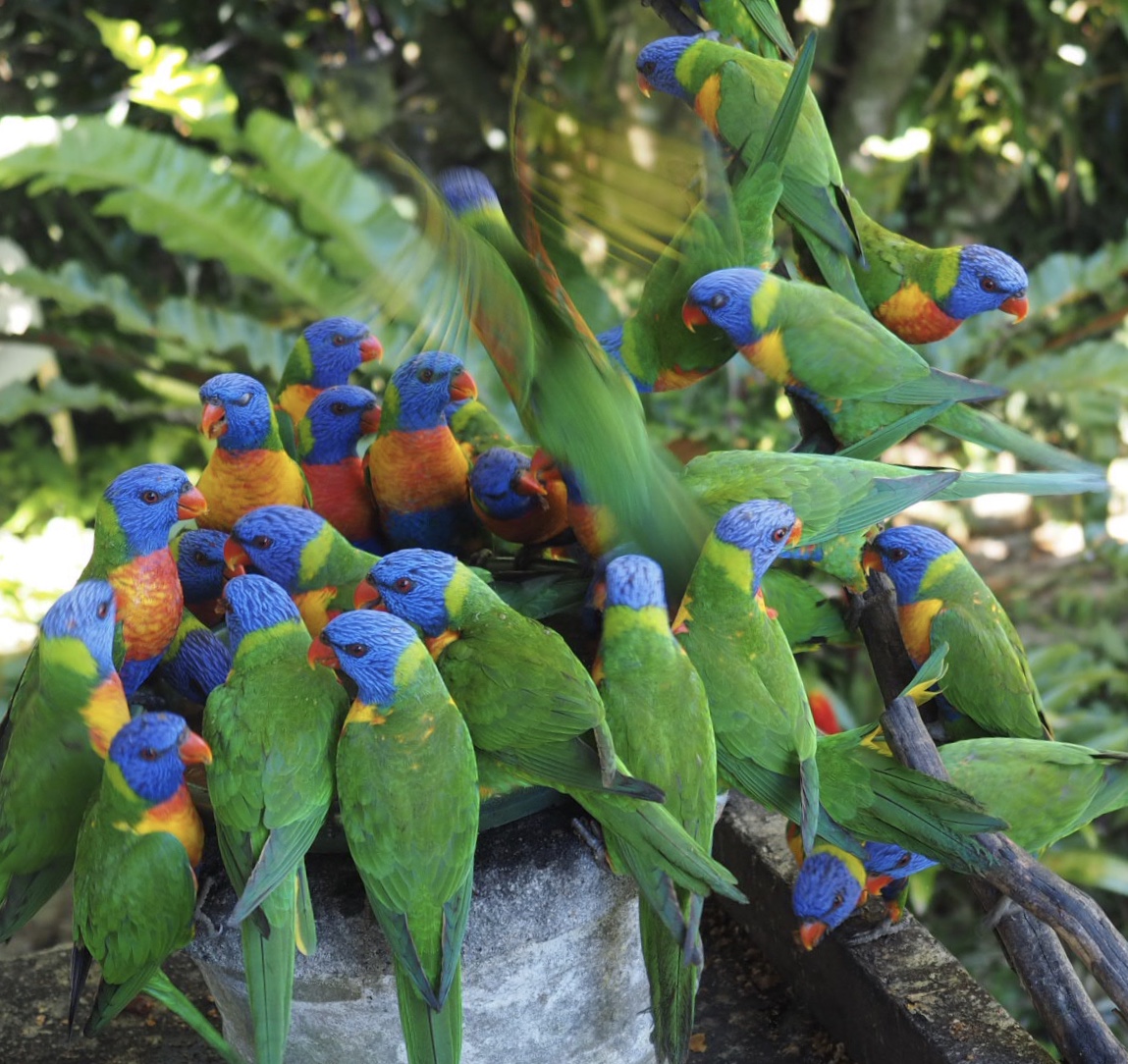During this long weekend, the birds at our feeder have become more and more numerous, with Satin Bowerbirds making their first appearance for the year, and Catbirds sneaking in at dawn and dusk. But it is the Rainbow Lorikeets that have dominated the show. Since we first put up our feeder in 1996, I have recorded the same 10 species coming in for a feed (see list below). The species composition may vary at other feeders depending on the food offered (we consistently use dates, softened and mashed up in water). Originally, Lorikeets were almost never at our feeder, but since cyclone Yasi the Rainbow Lorikeets are often a dominant visitor, with the occasional Scaley-breasted Lorikeet thrown into the mix
Yesterday morning and this morning the Rainbow Lorikeets came in numbers I have never seen before. I suspect the entire population of the village was at or around my feeder. The picture below reminds me of the old competition one saw at fairs where you had to guess the number of jellybeans in a large glass jar. I reckon there are 24 in the first photo and 27 in the second (both images have been cropped to include the central mass of birds only). Any other estimates?


Here is my list of birds that I have recorded at my feeder (the last two I try to discourage). I would be interested to hear from other residents who could add to this list. Please also include what type of food you put out.
- White-cheeked Honeyeater
- Lewin’s Honeyeater
- Macleay’s Honeyeater
- Rainbow lorikeet
- Scaley-breasted Lorikeet
- Satin Bower bird
- Spotted Catbird
- Riflebird
- Pied Currawong
- Brush Turkey
Jamie Oliver

We use whatever fruit we have with us, but I’ve also used Paradise Pellets, a Vetafarm product, made specifically for fruit eaters. My eclectus parrot gets them, but he always eats his fruit and nuts, and usually leaves them. At the cottage, we don’t have a feeder yet, so haven’t had lorries, all the other species though. The pellets aren’t always popular, but I console myself with the fact that if they don’t get eaten, it means there is sufficient food available in the forest . The pellets are easy to store, so I usually have some in the fridge.
Jamie, your photos are impressive and show exactly why these birds have the common name of ‘rainbow’ lorikeets. What remarkable colours and even more impressive when they are photographed en masse at your bird feeder. At my bird feeder I regularly have 9 of the species on your list. I have not been lucky enough as yet to have the scaley-breasted lorikeets visit my garden. Just recently I seem to have more than my fair share of brush turkeys invading the bird feeder. From sheer size (and clumsiness) they frighten away the smaller birds and recently destroyed one of my feeding dishes. They are hard to discourage and when there is food around they are intent on stealing it!